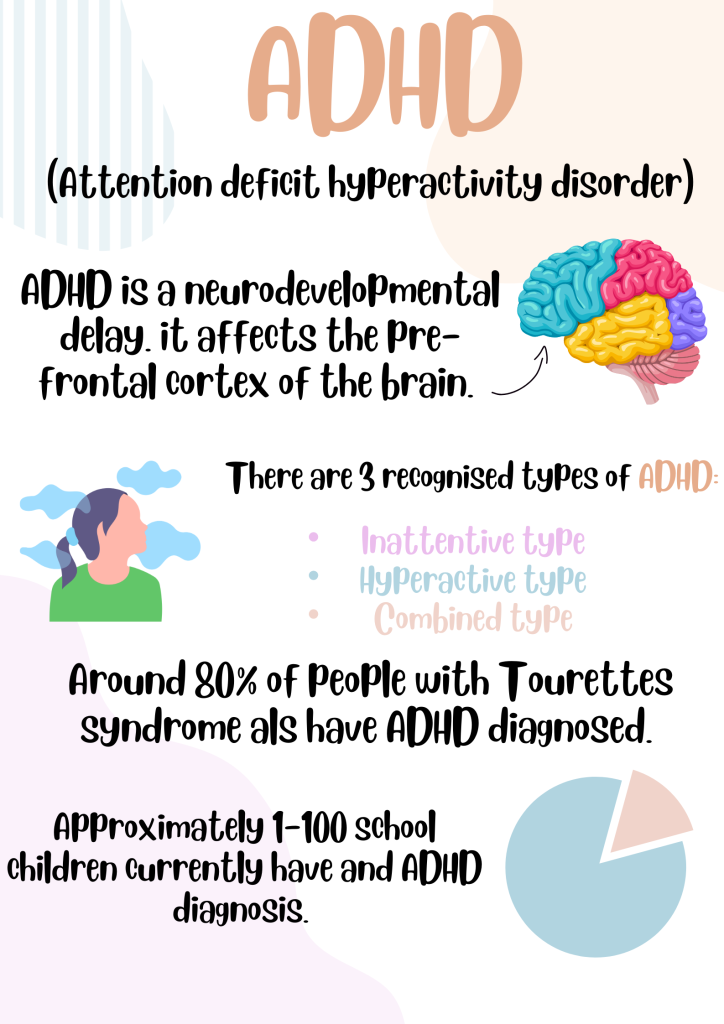
First of all,
A neurodevelopmental disease known as attention-deficit/hyperactivity disorder (ADHD) is typified by recurrent patterns of impulsivity, hyperactivity, and inattention. It affects people of all ages, with symptoms frequently beginning in childhood. A multifaceted strategy is needed to manage ADHD, which may include behavioral treatment, educational support, and medication. This article will examine the several drug alternatives available for managing ADHD, going over their advantages, potential side effects, methods of action, and typical concerns related to medication therapy.
Comprehending ADHD Drugs:
The main targets of ADHD drugs are the brain’s neurotransmitters, particularly norepinephrine and dopamine, which are essential for attention, impulse control, and executive functioning. Medication for ADHD is divided into two primary classes: stimulants and non-stimulants.
Pharmacological Stimulants:
The most regularly recommended drugs for ADHD are stimulants, which are frequently used as a first line of treatment. They function by raising norepinephrine and dopamine levels in the brain, which enhance focus, attention, and impulse control. Methylphenidate and amphetamine derivatives are the two primary categories of stimulant drugs.
Methylphenidate:
One of the most often recommended stimulants for ADHD is methylphenidate. Examples of such drugs are Ritalin and Concerta. They are available in multiple forms, including as extended-release and immediate-release, offering versatility in terms of dosage and duration of effect.
Amphetamine derivatives:
This group includes drugs like Vyvanse and Adderall. They also provide alternatives for both immediate and extended release, and they are available in various formulations. Methylphenidate and amphetamine-based drugs function similarly, albeit they could have slightly differing effects and half-lives.
Non-Stimulating Drugs:
Non-stimulant drugs may be taken into consideration for people who are intolerant of stimulants or who do not respond well to them. These drugs work differently from stimulants in that they target various neurotransmitters in the brain.
Atomoxetine:
Authorized for the treatment of ADHD in children, adolescents, and adults, Atomoxetine (Strattera) is a non-stimulant medicine. It functions by preventing norepinephrine from being reabsorbed, which raises norepinephrine levels in the brain. For people who are unable to handle stimulants, atomoxetine can be a useful substitute, even if it may take a few weeks for it to take full effect.
Alpha-2 adrenergic agonists guanfacine and clonidine are occasionally used off-label to treat ADHD, especially in those who also have comorbid disorders like anxiety or tics. They function by adjusting norepinephrine levels in the brain, which enhances focus and impulse control.
Advantages of ADHD Drugs:
Those with ADHD who take ADHD meds can benefit greatly from the following:
Better Focus and Attention:
Drugs assist people become less easily distracted and enhance their capacity to focus on one thing at a time, which enhances performance in the classroom and at work.
Decreased Hyperactivity and Impulsivity:
Stimulants have the ability to reduce hyperactivity and impulsivity, which helps people better manage their conduct and engage in social interactions.
Enhanced Executive Functioning:
ADHD patients frequently have impaired executive functioning, which can be improved with medication. These functions include organization, planning, and decision-making.
Better Quality of Life:
For people with ADHD and their families, good medication management can result in enhanced relationships, self-worth, and general quality of life.
Taking Care of Issues and Side Effects:
ADHD drugs provide advantages, but they may also have drawbacks that worry patients and caregivers. Typical worries consist of:
Adverse effects of stimulant medicines include elevated heart rate, reduced appetite, sleeplessness, and weight loss. Adverse effects from non-stimulant drugs might also include headache, nausea, and sleepiness.
Abuse Potential:
People who do not have ADHD but use stimulant drugs to improve performance or concentrate run the risk of misusing and abusing them.
Long-Term Safety:
Studies have indicated that ADHD drugs may have long-term impacts on development, heart health, and psychological results. When taken as prescribed and under the supervision of medical professionals, these drugs seem to have a generally good safety record.
Stigma:
Taking ADHD drugs may be stigmatized, especially in some communities or cultural groupings. Raising awareness and reducing stigma around ADHD can help people see it as a treatable medical condition.
In summary:
Effective control of medication is a crucial element of all-encompassing treatment for ADHD, providing noteworthy advantages to people of all ages. Both stimulant and non-stimulant drugs can aid with focus, attention, and impulse control, which can have a positive impact on social, professional, and academic performance. To guarantee that people with ADHD receive the right support and direction from medical professionals, it is crucial to address issues and potential side effects related to pharmaceutical therapy. We can optimize medication treatment for people with ADHD so they can live happy, fulfilling lives by addressing issues, raising awareness, and investigating choices.